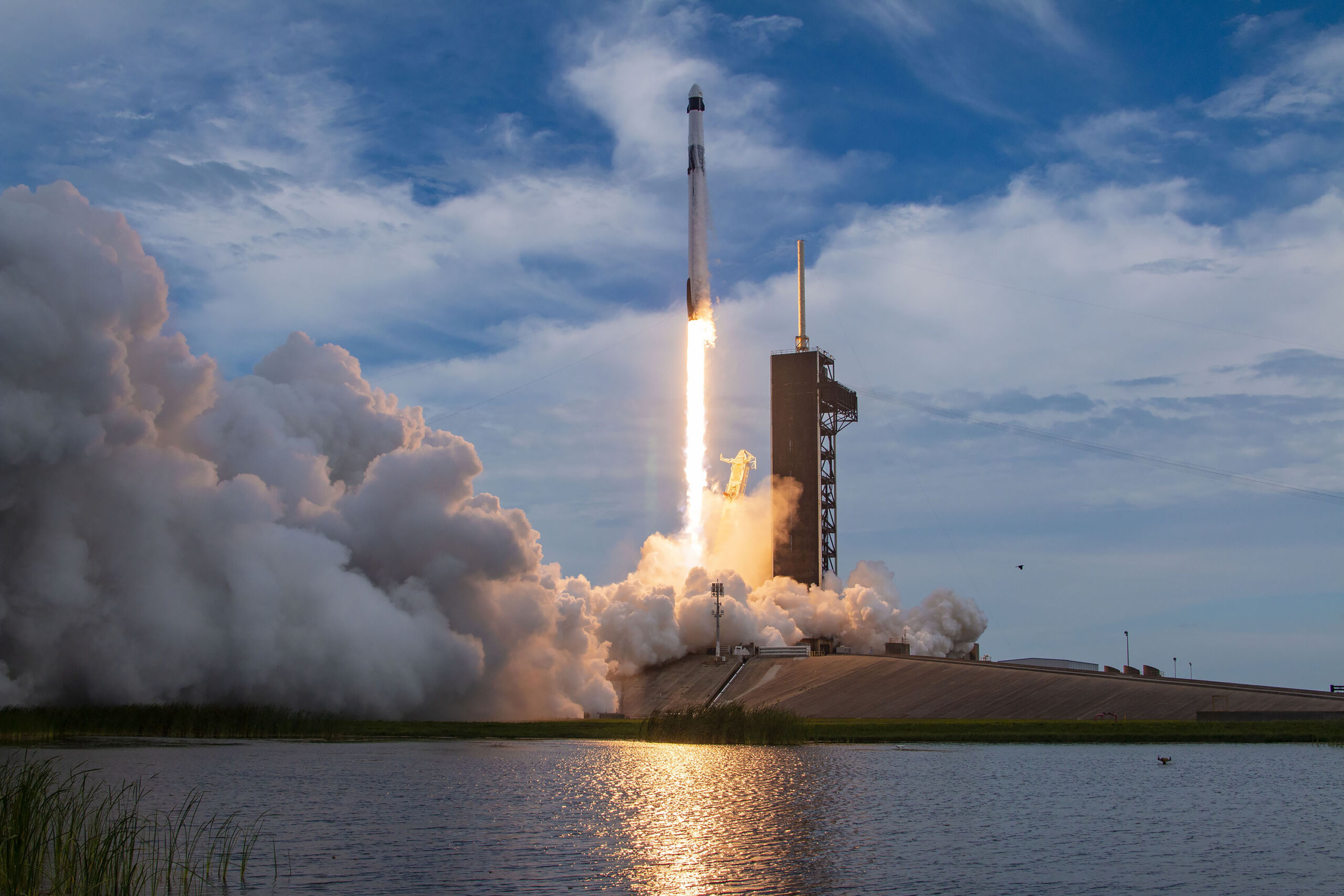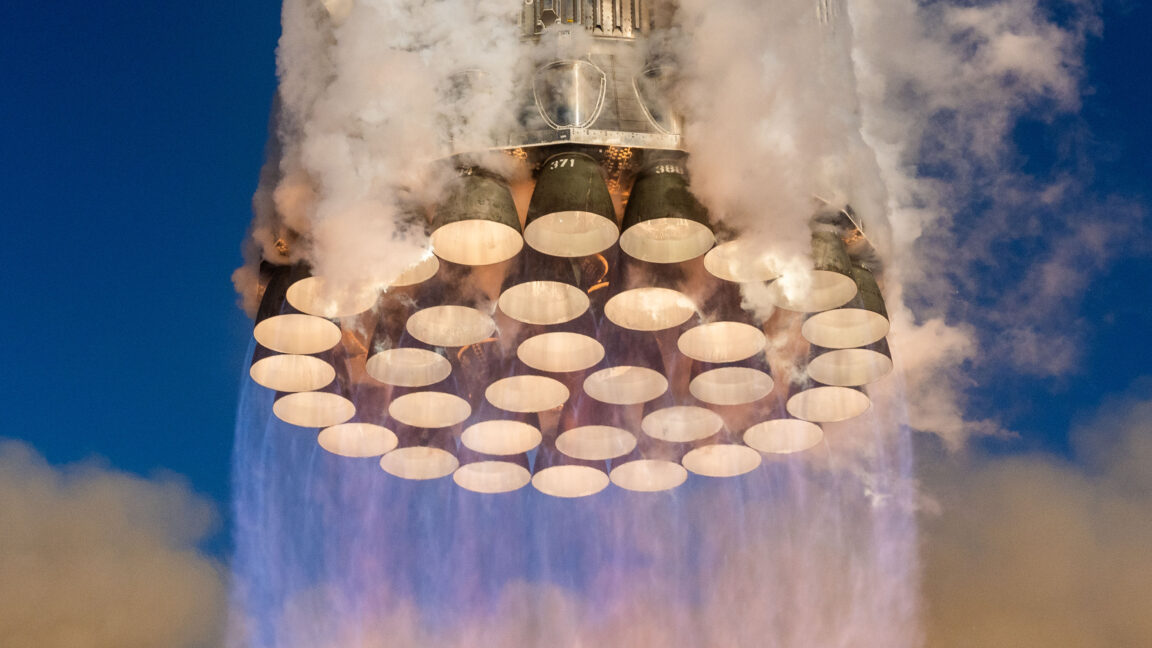The European Space Agency’s (ESA) has a deal with Axiom Space to get more Europeans in orbit. But does the partnership benefit European taxpayers who fund the agency’s operations?
On Wednesday, January 17, the third privately funded mission by US commercial spaceflight company Axiom Space is set to lift off from Kennedy Space Center in Florida on SpaceX’s Falcon 9 rocket. Inside the Crew Dragon capsule will be a quartet of space travelers, including Swedish fighter pilot Marcus Wandt.
Wandt will be flying under the European Space Agency (ESA) flag, although he is not exactly an ESA astronaut. In the 2022 European astronaut recruitment round, Wandt didn’t make the final five of Europe’s “proper” astronaut class, who became ESA staff members and started their astronaut training in 2023. Instead, he was selected as a member of ESA’s first astronaut reserve pool, a novelty developed by ESA with an apparent goal of encouraging its member states to pay for national missions in addition to their regular contributions to ESA’s budget. Sweden was the first to jump at the opportunity in April last year and is paying for Wandt’s two-week space trip through a contract brokered by ESA as part of a Memorandum of Understanding the agency signed with the American commercial company Axiom Space in October 2023.
Ticket to ride
Wandt is the first but not the only reserve astronaut with his ticket to space while his seemingly more successful colleagues who made the proper astronaut corps are still in training. Poland, too, has signed up and expects to fly its reservist, Sławosz Uznański, on another Axiom mission later this year.
Compared to their overall investment in space activities, the price these countries pay to see their nationals float in microgravity is not negligible. At the November 2022 ESA ministerial council—the triennial member state summit that decides the agency’s budget for the following three-year period—Sweden pledged 317 million euros ($355 million).
According to a 2018 announcement, Axiom Space sells 10-day space trips for $55 million a seat. The overall cost of each mission is likely to be quite a bit higher. Last year, Hungary signed a contract directly with Axiom to send a Hungarian national to the International Space Station independently of ESA. Hungary discussed plans for a national mission back in 2022 and, at that time, estimated the project to cost about $100 million. Based on that estimate, Sweden may be easily paying an equivalent of its annual contribution into the ESA budget to get Wandt to space.
In addition to Wandt and Uznański, the ESA astronaut reserve pool includes nine other candidates, none of them officially employed by ESA. By filling this astronaut reserve pool, ESA seems to have created a market for Axiom Space, a move that might raise questions given the agency’s purpose is to promote the European space sector. In fact, the ESA’s founding Convention enshrines the principle of geo-return, which grants member states at least an 80 percent return on their contributions into ESA’s budget in the form of research and development contracts. Although the cost of the Axiom missions is paid through ESA, most of this money goes to the Texas-headquartered Axiom Space and its launch provider, SpaceX.
Secret contracts
ESA refused to disclose details of the arrangement between Axiom Space and Sweden, calling it “proprietary data as this is implemented through a confidential commercial contract.” The Swedish National Space Agency didn’t respond to Ars Technica’s request for comment.
Poland’s announcement of a national mission for Uznański arrived in August last year, accompanied by a jaw-dropping increase of the country’s contribution to ESA’s budget. At the 2022 ministerial council, Poland earmarked 197 million euros for the agency’s activities in the 2023 to 2025 period. In August, the Polish Space Agency more than doubled this contribution, committing an additional 295 million euros ($322 million). It is not clear how much of this money will go toward Uznański’s space trip.
In the months following the announcement of the astronaut reserve pool, Axiom Space began actively approaching home countries of the reservists with offers to fly those men and women to space, according to media in the Czech Republic, which has recently declined the offer.
In addition to Sweden and Poland, the UK also intends to use Axiom’s services and conduct a British-only mission that will be headed by semi-retired ESA astronaut Tim Peake. It will also include the UK’s Rosemary Coogan, newly named as one of ESA’s career astronauts, as well as reservist Meganne Christian and para-astronaut John McFall. Unlike the Swedish and Polish mission, the British mission will be funded by the private industry in the UK rather than by taxpayers, according to the BBC.
What is the ESA astronaut reserve pool?
The contractual relationship between ESA and the reserve astronauts is somewhat murky. ESA told Ars Technica via email that “members of the astronaut reserve remain with their current employers and receive a consultancy contract from ESA.” Should one of these reserve astronauts receive a funded spaceflight assignment, they become what ESA calls project astronauts and are made ESA staff members, but only for one year.
ESA’s role in the Axiom missions includes signing “the spaceflight agreement with Axiom Space” on behalf of the member state, the agency said, and preparing “the project astronaut for the mission.” That includes “operational support for the flight” on top of the training provided by Axiom Space and SpaceX. Spacefarers who embark on their trip under ESA-brokered agreements also have access to Europe’s Columbus module of the International Space Station, which is off-limits to non-ESA space travelers.
ESA’s astronaut corps has traditionally been dominated by nationals of member states that contribute the most to the agency’s budget: Germany, Italy, France, and the UK. The 2022 astronaut selection round added a handful of candidates from mid-size contributors, such as Belgium, Switzerland, and Spain. Some of the reserve pool consists of candidates from bigger member states that might want to fund additional space trips for their nationals. But it’s also drawn from the smallest member states—those that have never had citizens chosen as proper career astronauts.
In those smaller member states like Poland, Sweden, and the Czech Republic, the appointment of a reserve spacefarer was enough to make headlines.
The Czech Ministry of Transport, which coordinates the post-communist country’s participation in ESA, however, told Ars Technica that the appointment of the reserve astronaut caused some confusion. Neither ESA nor the ministry is directly responsible for the activities of the reserve astronaut until a mission is planned. In the meantime, reservists participate in space promotion activities under the ESA banner, but only as a volunteer, the ministry said.
No access to space
Without Axiom, however, it’s unclear how these reserves would ever make it to space. The agency has never had its own human-rated spaceship and has always flown its astronauts to space on NASA or ROSCOSMOS-operated flights. And there’s a long line of astronauts ahead of them.
In addition to the five new full-time astronauts selected in 2022, ESA currently employs six trained and ‘space-flown’ astronauts: Italians Samantha Cristoforetti and Luca Parmitano, Frenchman Thomas Pesquet, Andreas Mogensen of Denmark, and German Alexander Gerst have each flown to space twice. Matthias Mauer, also of Germany, has completed one space mission. Any of them might be returned to space on future missions.
ESA Director General Josef Aschbacher previously lobbied for ESA to establish its own human spaceflight program. Currently, however, the agency can’t even launch its satellites. The heavy-lift Ariane 5 rocket made its final flight in July 2023 after nearly three decades of service. The replacement Ariane 6 launcher has still not completed testing. Its development has been heavily criticized for inefficiency, delays, and lack of transparency. ESA’s lightweight Vega C is also currently grounded following a launch failure in December 2022.
For years to come, ESA’s full-time astronauts, as well as reservists on national or industry-funded missions, will have to keep buying tickets from NASA and Axiom Space. The question is whether it's worth the taxpayers’ money.
Tereza Pultarova is a London-based science and technology reporter. She has been covering the space sector for over 10 years and has previously served as a senior reporter at Space.com.


